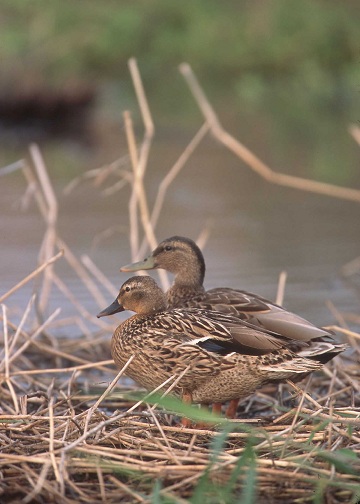- Hawaiian Duck
Taxobox
name = Hawaiian Duck
status = EN | status_system = IUCN3.1
trend = down

image_width = 200px
regnum =Animalia
phylum =Chordata
classis =Aves
ordo =Anseriformes
familia =Anatidae
genus = "Anas "
species = "A. wyvilliana"
binomial = "Anas wyvilliana"
binomial_authority = Sclater,1878 The Hawaiian Duck ("Anas wyvilliana") is a
species of the bird "Anas ". It is endemic to the large islands ofHawaii . Some authorities treat it as an islandsubspecies of theMallard , based on their capacity to produce fertile hybrids, but it appears well distinct and capability of hybridization is meaningless in dabbling ducktaxonomy . The native Hawaiian name for this duck is "koloa maoli". [This means "native mallard". Often, it is shortened to just "koloa" but this term denotes the Mallard if applied strictly, and all mallard-likedabbling duck s if applied loosely.]The former range of the Hawaiian Duck included all of the main Hawaiian islands except the island of
Lanai . Now the Hawaiian Duck only exists on the island ofKauai . The Hawaiian Duck was extirpated on all other islands, but was subsequently reestablished onOahu ,Hawaii , andMaui through release of captive-reared birds. However, all the Hawaiian Ducks in the reestablished populations have bred with feralMallard ducks and have produced hybrid offspring (Griffin "et al." 1989); consequently, "pure" Hawaiian Ducks are still only found on Kauai.Males, 19-20" (some 50 cm) long, are bigger than females, (16-17" or about 45 cm). Both sexes are mottled brown in color, resembling a female mallard. The
speculum feathers are greenish-blue, bordered on both sides by white. The tail is dark overall, unlike the black-and-white tail of a mallard. The adults male has a darker head and neck which is also sometimes green. A first-year male "koloa maoli" looks like an eclipse-plumaged male Mallard. The feet and legs are orange. The bill is olive green in the male and dull orange with dark markings in the female. Another difference between the Hawaiian Duck and the Mallard is their vocalizations: The "koloa maoli" quacks like a mallard, however not as harsh and vocal. Instead, the voice is softer than a mallards.The Hawaiian Duck is a very wary bird often found in pairs instead of large groups. They occur in lowland wetlands, river valleys, and mountain streams, not adapting too well to human-modified
habitat . The "koloa maoli"'s diet consists of freshwater vegetation,mollusk s,insects , and other aquaticinvertebrate s. Some pairs nest year round, but the primary breeding season is from December to May. During the breeding season, pairs are often engaged in spectacular nuptial flights. Two to ten eggs are laid in a well-concealed nest lined with down and breast feathers. Soon after hatching, the young can take to the water, but cannot fly for nine weeks.Threats to the "koloa maoli" include
feral cat s,rats , andmongoose which eat the eggs and young. Interbreeding with feral mallards is also a major problem, as the hybrids seem to be less well-adapted to the local ecosystem but still rather common due to the high numbers of feral mallards. Several attempted reintroductions have already failed due to the hybrid ducks produced in captivity faring badly in the wild.(Rhymer & Simberloff 1996)Notes
References
* Database entry includes a brief justification of why this species is vulnerable and the criteria used
* Griffin, C. R.; Shallenberger, F. J. & Fefer, S. I. (1989): Hawaii's endangered waterbirds: a resource management challenge. "In:" Sharitz, R. R. & Gibbons, I. W. (eds.): "Proceedings of Freshwater Wetlands and Wildlife Symposium": 155-169. Savannah River Ecology Lab, Aiken, South Carolina.
* Hawaii Audubon Society (2005): "Hawaii's Birds" (6th edition). ISBN 1889708003
* Rhymer, Judith M. & Simberloff, Daniel (1996): Extinction by hybridization and introgression. "Annu. Rev. Ecol. Syst." 27: 83-109. DOI|10.1146/annurev.ecolsys.27.1.83 (HTML abstract)External links
* [http://www.birdlife.org/datazone/search/species_search.html?action=SpcHTMDetails.asp&sid=436&m=0 BirdLife Species Factsheet.]
Wikimedia Foundation. 2010.
